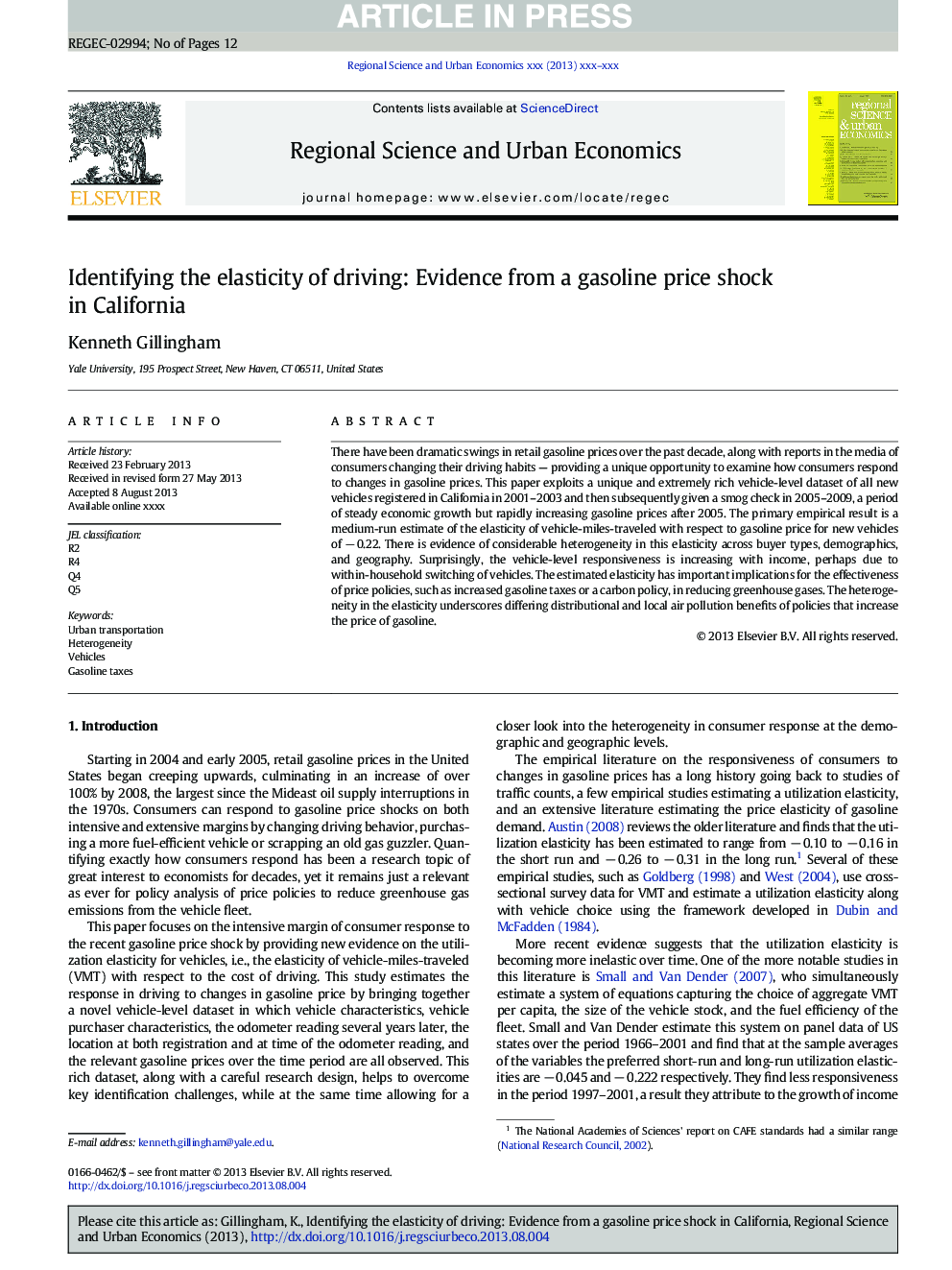| Article ID | Journal | Published Year | Pages | File Type |
|---|---|---|---|---|
| 7383958 | Regional Science and Urban Economics | 2014 | 12 Pages |
Abstract
There have been dramatic swings in retail gasoline prices over the past decade, along with reports in the media of consumers changing their driving habits - providing a unique opportunity to examine how consumers respond to changes in gasoline prices. This paper exploits a unique and extremely rich vehicle-level dataset of all new vehicles registered in California in 2001-2003 and then subsequently given a smog check in 2005-2009, a period of steady economic growth but rapidly increasing gasoline prices after 2005. The primary empirical result is a medium-run estimate of the elasticity of vehicle-miles-traveled with respect to gasoline price for new vehicles of â 0.22. There is evidence of considerable heterogeneity in this elasticity across buyer types, demographics, and geography. Surprisingly, the vehicle-level responsiveness is increasing with income, perhaps due to within-household switching of vehicles. The estimated elasticity has important implications for the effectiveness of price policies, such as increased gasoline taxes or a carbon policy, in reducing greenhouse gases. The heterogeneity in the elasticity underscores differing distributional and local air pollution benefits of policies that increase the price of gasoline.
Related Topics
Social Sciences and Humanities
Economics, Econometrics and Finance
Economics and Econometrics
Authors
Kenneth Gillingham,
